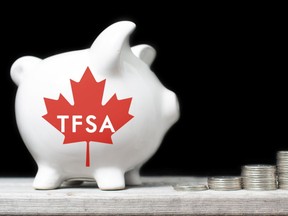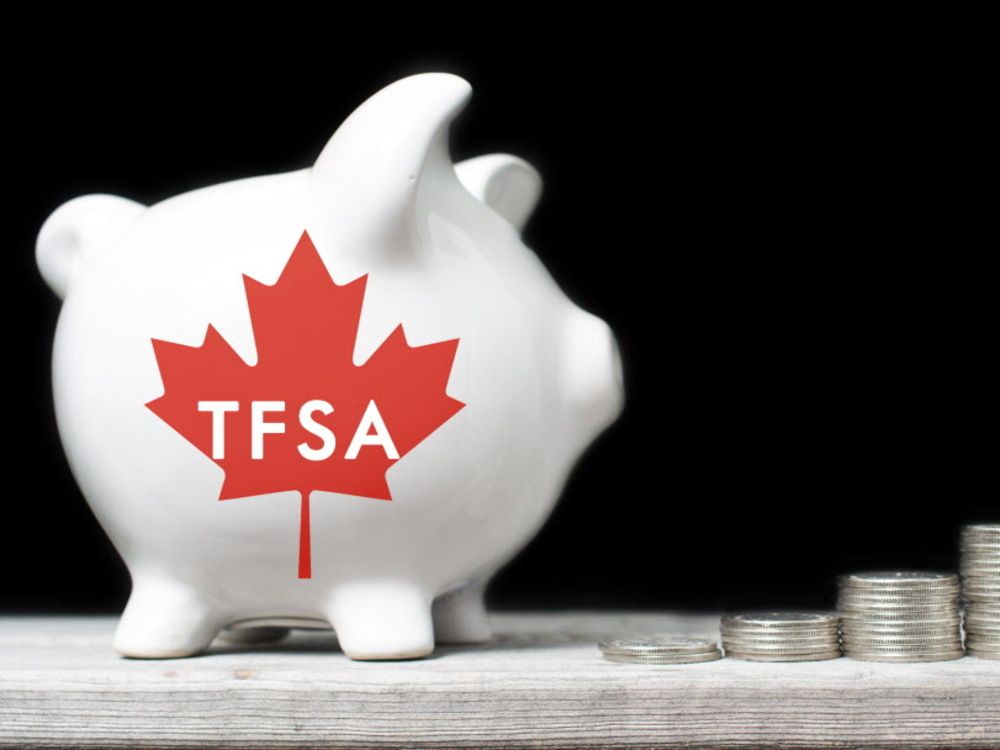Jamie Golombek: He ran afoul of TFSA limit and went to court to get CRA to reconsider his case, and ended up disappointed

Reviews and recommendations are unbiased and products are independently selected. Postmedia may earn an affiliate commission from purchases made through links on this page.
Article content
One of the easiest ways to stay on top of your tax-free savings account (TFSA) contribution limit and avoid an overcontribution penalty is to double-check your limit online, which can be easily done by logging on to Canada Revenue Agency’s online portal for individuals called My Account.
Advertisement 2
This advertisement has not loaded yet, but your article continues below.
THIS CONTENT IS RESERVED FOR SUBSCRIBERS ONLY
Subscribe now to read the latest news in your city and across Canada.
- Exclusive articles by Kevin Carmichael, Victoria Wells, Jake Edmiston, Gabriel Friedman and others.
- Daily content from Financial Times, the world’s leading global business publication.
- Unlimited online access to read articles from Financial Post, National Post and 15 news sites across Canada with one account.
- National Post ePaper, an electronic replica of the print edition to view on any device, share and comment on.
- Daily puzzles, including the New York Times Crossword.
SUBSCRIBE TO UNLOCK MORE ARTICLES
Subscribe now to read the latest news in your city and across Canada.
- Exclusive articles by Kevin Carmichael, Victoria Wells, Jake Edmiston, Gabriel Friedman and others.
- Daily content from Financial Times, the world’s leading global business publication.
- Unlimited online access to read articles from Financial Post, National Post and 15 news sites across Canada with one account.
- National Post ePaper, an electronic replica of the print edition to view on any device, share and comment on.
- Daily puzzles, including the New York Times Crossword.
REGISTER TO UNLOCK MORE ARTICLES
Create an account or sign in to continue with your reading experience.
- Access articles from across Canada with one account.
- Share your thoughts and join the conversation in the comments.
- Enjoy additional articles per month.
- Get email updates from your favourite authors.
Article content
There are a couple things to keep in mind. First, know that your TFSA contribution and withdrawal information is not updated in real time and may be out of date. Check the “as of” date posted online along with your TFSA room.

Financial Post Top Stories
Sign up to receive the daily top stories from the Financial Post, a division of Postmedia Network Inc.
Thanks for signing up!
A welcome email is on its way. If you don’t see it, please check your junk folder.
The next issue of Financial Post Top Stories will soon be in your inbox.
We encountered an issue signing you up. Please try again
Article content
Second, pay close attention to the number shown on the screen, especially if the amount is in brackets, meaning you have a “negative contribution limit,” which can happen if you have overcontributed in a prior calendar year. A case decided earlier in June involved a taxpayer who claimed to be confused by this bracketed amount, ran afoul of his TFSA limit and went to court to get a judge to order the CRA to reconsider his case.
Before delving into the case, let’s briefly review the rules. You can contribute $6,500 to your TFSA for 2023, and, depending on your age, your limit could be as high as $88,000 if you’ve never made a TFSA contribution before and you have been a resident of Canada since 2009, since unused room automatically carries forward from one calendar year to the next. You can also recontribute any TFSA withdrawals back into your TFSA, beginning the calendar year following the year of withdrawal.
Article content
Advertisement 3
This advertisement has not loaded yet, but your article continues below.
Article content
If you accidentally contribute to your TFSA beyond your maximum, you can get hit with an overcontribution penalty tax that is equal to one per cent per month for each month you’re over your limit. If you get assessed this tax, you can ask the CRA to waive or cancel it, which it has the power to do if it can be established the tax arose “as a consequence of a reasonable error” and the overcontribution is withdrawn from the TFSA “without delay.” If the CRA refuses to cancel the tax, you can take the matter to federal court, where a judge will determine whether the CRA’s decision not to waive the tax was reasonable.
In this recent case, the taxpayer began contributing to his TFSA in 2014. He overcontributed in 2015 and, as a result, the CRA in May 2016 sent him an “education letter” notifying him of his overcontribution, and telling him to withdraw the excess contribution “immediately” to avoid the penalty tax.
Advertisement 4
This advertisement has not loaded yet, but your article continues below.
Article content
Fast forward to 2021 when the taxpayer once again overcontributed to his TFSA. In July 2022, the CRA notified him of his overcontribution by way of a Notice of Assessment, charging him with an overcontribution tax of $2,570.60, plus a penalty of $128.53, along with arrears interest.
The taxpayer subsequently requested to have the tax and penalties cancelled. The taxpayer explained he had consulted his profile on the CRA’s website, which identified his TFSA contribution room as “($18,459.99).” The taxpayer explained he interpreted this information to mean he had $18,459.99 in available TFSA contribution room, “not realizing that the brackets around that figure indicated that he actually had a negative contribution limit, as a result of previous overcontribution.” He told the CRA agent he was taking steps to remove the excess amount.
Advertisement 5
This advertisement has not loaded yet, but your article continues below.
Article content

In August 2022, the CRA denied his first request to cancel the tax, explaining that his circumstances “did not constitute a reasonable error.” The CRA said the taxpayer had already received an education letter in 2016 due to a previous TFSA overcontribution, and it was the taxpayer’s responsibility to withdraw any excess contributions and “to keep and review accurate records to ensure” he remains within his TFSA contribution room.
The following month, the taxpayer requested a second independent review by a different CRA officer. In his letter to the CRA, he said he shouldn’t be blamed for his overcontribution as he “was not aware that a contribution limit displayed in brackets signifies a negative amount (i.e., an excess) and that, upon learning of his overcontribution, he promptly removed the excess amount from his TFSA account.”
Advertisement 6
This advertisement has not loaded yet, but your article continues below.
Article content
The taxpayer also said that when he called the CRA to resolve the issue, the CRA agent admitted that nowhere in the TFSA contribution room section does it state that a value in brackets means a negative number. He also said he couldn’t recall his 2015 TFSA overcontribution, saying “it must have been a mistake, because he is an honest taxpayer.”
The CRA again denied the taxpayer’s request, so the taxpayer took the matter to Federal Court to ask a judge to determine whether the CRA officer’s refusal to exercise their discretion and cancel the overcontribution tax was “reasonable.”
The CRA officer acknowledged the taxpayer’s request for relief resulted from him not understanding the meaning of the brackets around the amount shown on the CRA website. Nonetheless, the officer noted “it is the responsibility of each TFSA account holder to be aware of the rules and regulations governing TFSAs and to manage their TFSA accordingly, including understanding that the use of brackets represents negative contribution room.”
Advertisement 7
This advertisement has not loaded yet, but your article continues below.
Article content
The judge had no doubt that the taxpayer was acting honestly and his overcontribution was based on a “genuine misunderstanding” as to how much TFSA contribution room he had. But, ultimately, a taxpayer’s contribution room, and whether they are in an overcontribution position, is a function of contributions and withdrawals made by that taxpayer. It’s not dependent on whether a taxpayer understands the information on a website.
-

Taxpayer who hired mother-in-law, wife gets CRA pushback
-

Making a deliberate TFSA overcontribution is never a good idea
-

Massive TFSA overcontribution lands taxpayer in CRA trouble
Since the taxpayer’s contribution information is “within the knowledge, or the means of knowledge, of the taxpayer,” the judge concluded the CRA’s reasoning in denying the taxpayer’s request for relief was “intelligible” and reasonable, and dismissed the taxpayer’s application for judicial review.
Jamie Golombek, CPA, CA, CFP, CLU, TEP, is the managing director, Tax & Estate Planning with CIBC Private Wealth in Toronto. Jamie.Golombek@cibc.com.
_____________________________________________________________
If you liked this story, sign up for more in the FP Investor newsletter.
_____________________________________________________________










Comments
Postmedia is committed to maintaining a lively but civil forum for discussion and encourage all readers to share their views on our articles. Comments may take up to an hour for moderation before appearing on the site. We ask you to keep your comments relevant and respectful. We have enabled email notifications—you will now receive an email if you receive a reply to your comment, there is an update to a comment thread you follow or if a user you follow comments. Visit our Community Guidelines for more information and details on how to adjust your email settings.
Join the Conversation